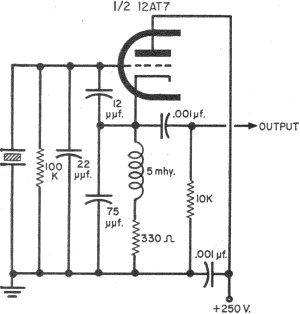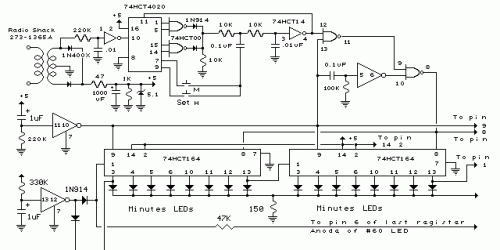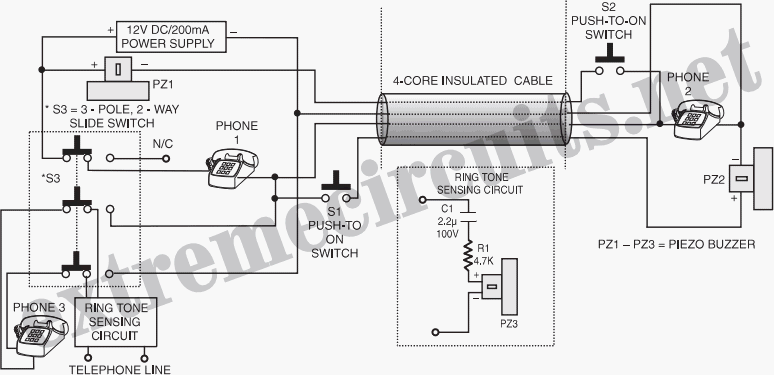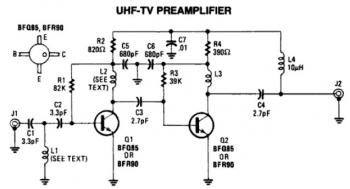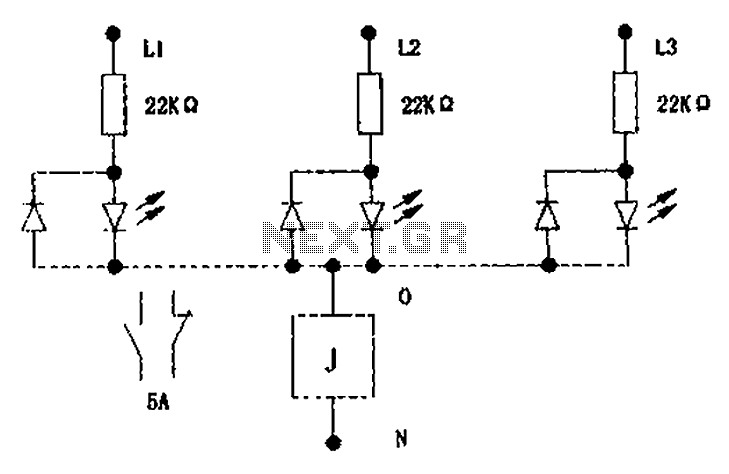
EL7513 led driver circuit design
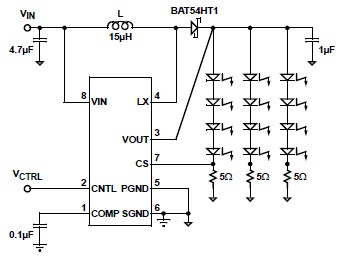
A simple white LED driver schematic can be created using the EL7513 constant current boost regulator, which is specifically designed for driving white LEDs. This driver can manage 4 LEDs in series or up to 12 LEDs in a parallel or series configuration, achieving an efficiency of up to 91% with a frequency of less than 200Hz (for C3 = 4700pF). When utilizing PWM, it is advisable to implement an RC filter before the CNTL pin. If the voltage level drops below 0.1V, the chip enters a shutdown mode, consuming less than 1µA of supply current for VIN below 5.5V. This circuit diagram for the LED driver is optimized for maximum efficiency, driving three sets of four LEDs in a series configuration. The input voltage required for this LED driver application circuit should be approximately between 2.7V and 4.2V, typically at 3.3V.
The EL7513 constant current boost regulator is a highly efficient solution for driving white LEDs, making it suitable for various applications, including backlighting and decorative lighting. The architecture of the circuit allows for flexibility in LED configurations, enabling designers to choose between series and parallel arrangements based on their specific requirements.
In a typical application, the EL7513 operates by boosting the input voltage to a level sufficient to drive the desired number of LEDs. The device regulates the output current to ensure that each LED receives a consistent current, which is crucial for maintaining uniform brightness and prolonging the lifespan of the LEDs. The use of a PWM signal for dimming control allows for efficient brightness adjustment without significant power loss, making it ideal for applications where energy efficiency is paramount.
The capacitor (C3) connected to the frequency control pin influences the switching frequency of the regulator. A value of 4700pF is recommended for operation below 200Hz, which is suitable for applications where flicker-free illumination is desired. The RC filter before the CNTL pin smooths the PWM signal, ensuring that the regulator responds appropriately to changes in the control signal and maintains stable output current.
The shutdown feature of the EL7513 is particularly beneficial for battery-operated devices, as it minimizes power consumption when the device is not in use. By ensuring that the supply current drops below 1µA when in shutdown mode, it contributes to overall energy savings and extends battery life.
Overall, the EL7513 LED driver circuit is an effective and efficient solution for applications requiring reliable and adjustable LED illumination, with a straightforward design that can be easily integrated into various electronic projects.A very simple white led driver schematic circuit can be designed using the EL7513 constant current boost regulator specially designed for driving white LEDs. It can drive 4 LEDs in series or up to 12 LEDs in parallel or series configuration and achieves efficiency up to 91%.
with frequency less than 200Hz (for C3 = 4700pF). When a higher frequency PWM is used, an RC filter is recommended before the CNTL pin. When the level falls below 0. 1V, the chip goes into shut-down mode and consumes less than 1 A of supply current for VIN less than 5. 5V. As you can see this circuit diagram led driver is designed for maximum efficiency, and drives 3 legs of 4 LEDs in a series configuration.
The input voltage required for this led driver application circuit must be around 2. 7 and 4. 2 volt, typically 3. 3 volt. 🔗 External reference
The EL7513 constant current boost regulator is a highly efficient solution for driving white LEDs, making it suitable for various applications, including backlighting and decorative lighting. The architecture of the circuit allows for flexibility in LED configurations, enabling designers to choose between series and parallel arrangements based on their specific requirements.
In a typical application, the EL7513 operates by boosting the input voltage to a level sufficient to drive the desired number of LEDs. The device regulates the output current to ensure that each LED receives a consistent current, which is crucial for maintaining uniform brightness and prolonging the lifespan of the LEDs. The use of a PWM signal for dimming control allows for efficient brightness adjustment without significant power loss, making it ideal for applications where energy efficiency is paramount.
The capacitor (C3) connected to the frequency control pin influences the switching frequency of the regulator. A value of 4700pF is recommended for operation below 200Hz, which is suitable for applications where flicker-free illumination is desired. The RC filter before the CNTL pin smooths the PWM signal, ensuring that the regulator responds appropriately to changes in the control signal and maintains stable output current.
The shutdown feature of the EL7513 is particularly beneficial for battery-operated devices, as it minimizes power consumption when the device is not in use. By ensuring that the supply current drops below 1µA when in shutdown mode, it contributes to overall energy savings and extends battery life.
Overall, the EL7513 LED driver circuit is an effective and efficient solution for applications requiring reliable and adjustable LED illumination, with a straightforward design that can be easily integrated into various electronic projects.A very simple white led driver schematic circuit can be designed using the EL7513 constant current boost regulator specially designed for driving white LEDs. It can drive 4 LEDs in series or up to 12 LEDs in parallel or series configuration and achieves efficiency up to 91%.
with frequency less than 200Hz (for C3 = 4700pF). When a higher frequency PWM is used, an RC filter is recommended before the CNTL pin. When the level falls below 0. 1V, the chip goes into shut-down mode and consumes less than 1 A of supply current for VIN less than 5. 5V. As you can see this circuit diagram led driver is designed for maximum efficiency, and drives 3 legs of 4 LEDs in a series configuration.
The input voltage required for this led driver application circuit must be around 2. 7 and 4. 2 volt, typically 3. 3 volt. 🔗 External reference
